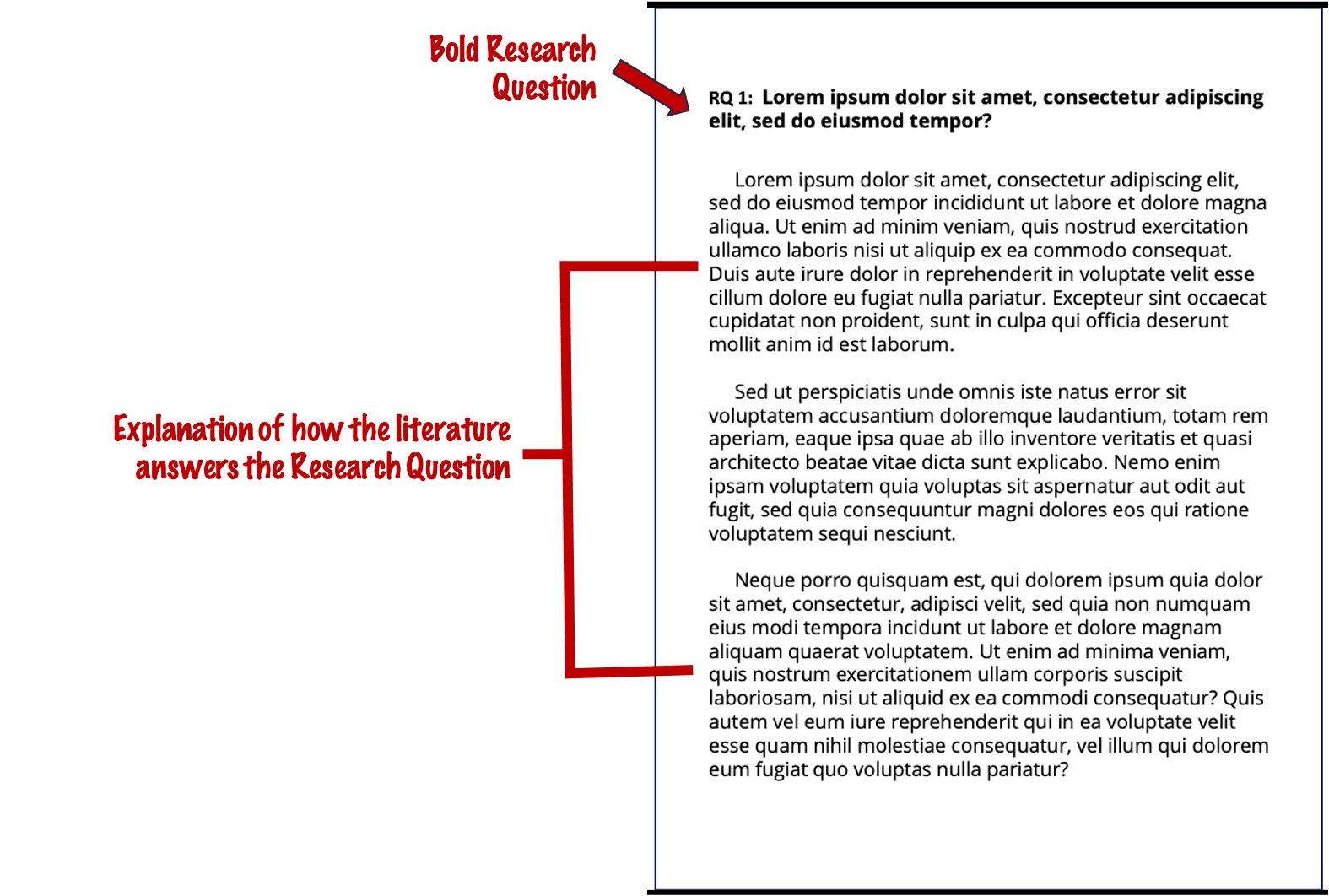11 Writing the Literature Review
Purpose of a Literature Review
The goal of the literature review is to determine what researchers have discovered about the topic you plan to investigate. You accomplish this by reading scholarly literature to see how researchers have approached an instructional challenge that is similar to the one you want to solve, and then consider what they discovered. You will search the literature to find out what has worked and what hasn’t. You will then consider that collected information when shaping your research and instructional product.
Writing “RQ Sections”
The literature review’s purpose is to find research that can answer each of your research questions. I’ve created a process to help you do that. The process involves “RQ Sections.” An RQ Section begins with a research question. Underneath the research question, you will discuss how the literature answers the research question.
Your final research project will have two RQs. Therefore, you will have two RQ sections. When completed, an RQ section will have multiple pages that discuss how the research answers the associated RQ.
Instructions:
- Insert the RQ and make it bold. (Next term, when you finalize your literature review, you will remove the RQ.)
- Write paragraphs that answer the RQ with cited literature.
Focusing Questions
Use the following generative writing prompts to jump start and focus your writing. When you take time to answer the questions thoughtfully and thoroughly, you will generate many paragraphs that will soon turn into many pages. You can then shape your raw answers into a literature review.
Just start writing! Let it flow!
General questions
- What does research have to say about the problem that I plan to solve?
- What does research have to say about my target audience, or a similar demographic?
- What does research have to say about learning theories that may be relevant to my topic, instructional problem, and/or target audience?
- What does research have to say about instructional strategies that can be used to address my instructional problem and/or target audience?
Questions for specific articles
- How well does this study answer my RQ1 and RQ2? Why? Give details.
- What relevant issues did the study fail to address (if any)? These are called “research gaps,” and you can discuss these gaps in your literature review.
Do’s and Don’ts of Writing an RQ Section
Do:
- Focus only on answering the designated research question.
- Refer to authors by last names, not first names.
- Focus on what others have discovered rather than your opinion or beliefs.
- Define acronyms when they are introduced.
Don’t:
- Include extraneous study details that don’t answer the research question.
- Use colloquialisms (e.g. “early bird,” “driver’s seat”) or slang.

